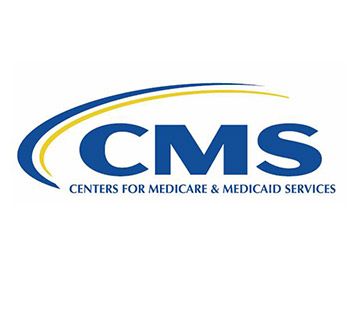On May 22, 2019, the Center for Medicare and Medicaid Innovation (CMMI) released a preview of the Request for Applications (RFAs). This documentation will be used by ambulance providers and suppliers to apply for inclusion as “Participants” in the Emergency Triage, Treat, and Transport (ET3) pilot program.
Webinar: Learn More About the RFA
June 13, 2019 | 2:00 PM Eastern
Speakers: Brian Werfel, Kathy Lester, Rebecca Williamson, Asbel Montes
$99 for Members | $198 for Non-Members
Register Now
Relevant Background
On February 14, 2019, CMMI announced the creation of a new 5-year pilot program designed to give participating EMS agencies greater flexibility to address the needs of Medicare beneficiaries following a 911 call. The ET3 model would create a new payment model under which participating EMS agencies will be eligible for Medicare reimbursement for: (1) transportation to alternative treatment destinations and (2) treatment at the scene. At the time, CMMI indicated that it anticipated starting the ET3 model in early 2020. To that end, CMMI anticipated soliciting Requests for Participation in the Summer of 2019.
Participation in this pilot program is voluntary. Regardless of whether an ambulance provider or supplier participates in the pilot program, payment for ambulance transportation currently covered under the Medicare Ambulance Fee Schedule will not be affected.
The RFA provides a good deal of additional information regarding the proposed operation of the ET3 Model. These additional details are summarized below.
Eligibility Criteria/Application Process
To be eligible to participate, you must be a Medicare-enrolled ambulance provider or supplier. In addition, CMMI is limiting eligibility to ambulance providers and suppliers that are located in a state or state in which at least 15,000 Medicare FFS emergency ambulances took place in calendar year 2017. Note: based on this restriction, ambulance providers and suppliers in the State of Alaska would not be eligible for participation in the ET3 Model.
Medical Necessity Requirement
CMMI previously indicated that the existing medical necessity requirements would apply to ambulance transportation to alternative treatment destinations. In the RFA, CMMI reiterated this requirement. As a result, EMS agencies will only be eligible for reimbursement for transportation to alternative treatment destinations to the extent the beneficiary’s condition is such that safe transport by other means is contraindicated.
CMMI indicated that beneficiaries that do not meet the medical necessity requirements for ambulance transportation may still meet the medical necessity requirements for a Medicare-covered item or service furnished by a qualified health care practitioner, and, therefore, may allow an EMS agency to receive payment for treatment at the scene under the ET3 Model.
Payments under the ET3 Model
The ET3 Model provides for a number of new payment streams. The two payment streams being made available to participating EMS agencies are: (1) payment for transportation of Medicare beneficiaries to alternative treatment destinations and (2) payment for treatment of the Medicare beneficiary at the scene, where such care was rendered by a qualified health care practitioner either at the scene or via telehealth.
Payment for Transportation to Alternative Treatment Destinations
When the ET3 Model was first announced, CMS indicated that the reimbursement to EMS agencies for providing transportation to alternative treatment destinations would be based on the corresponding BLS “base rate” in the area. However, in the RFA, CMMI indicates that the payment for transportation to an alternative treatment destination will now be made at either the applicable BLS emergency or ALS emergency base rate. In order to qualify for payment at the applicable ALS emergency rate, the EMS agency must meet Medicare’s definition of “Advanced Life Support” (i.e., the provision of valid ALS intervention and/or the provision of a qualifying ALS assessment). The payment for this base rate would include the current adjustments for transports provided in urban, rural, or super-rural areas.
The EMS agency would also be eligible for payment for all loaded mileage, at the applicable Medicare mileage rate. This payment would include all current adjustments, including the “bonus” paid for the first 17 rural miles.
Note: CMMI indicated that it would be creating an exception to general Medicare requirement that patients be transported to the nearest appropriate facility. Based on the language in the RFA, it appears clear that CMMI would cover all of the mileage to an alternative treatment destination, even where transportation to the nearest hospital ED would have been shorter.
Based on the language in the RFA, it appears that claims for transportation to alternative treatment destinations will be submitted using the normal ambulance HCPCS codes (i.e., A0427 for an ALS emergency and A0429 for a BLS emergency).
Payment for Treatment at the Scene
When the EMS agency facilitates in-person treatment by a qualified health care practitioner (QHP), the EMS agency will be paid an amount equivalent to the BLS emergency or ALS emergency base rate. In order to qualify for payment at the applicable ALS emergency rate, the EMS agency must provide medically necessary supplies and services and either a qualifying ALS assessment or the provision of at least one ALS intervention. When the EMS agency facilitates treatment in pace via telehealth, the EMS agency will be paid a modified “telehealth originating site facility fee” equivalent to the applicable BLS emergency or ALS emergency base rate.
Claims submitted for treatment at the scene, whether by the QHP in person or via telehealth, will be submitted using a model-specific code (yet to be announced).
Performance-Based Payment Adjustment for EMS Agencies
EMS agencies that provide transportation to alternative treatment destinations and/or treatment at the scene may be eligible for performance-based payment adjustments of up to 5%, based upon meeting certain performance and reporting metrics. These adjustments will become available no earlier than Year 3 of the ET3 Model, and are not guaranteed. Performance-based payment adjustments would be based on performance during the previous year (e.g., if the EMS agency meets the performance criteria in Year 3, it would see an increase in Year 4). These performance-based payment adjustments apply only to payments under the ET3 Model, i.e., they do not apply to Medicare payments made under the current Medicare Ambulance Fee Schedule.
Payment for Non-Participant Partners
When an EMS agency transports a patient to an alternative treatment destination, that facility will bill Medicare for the services it renders to the beneficiary using its normal claims submission procedures.
Payment for Qualified Health Care Practitioners
A QHP that partners with an EMS agency to provide treatment at the scene will bill Medicare using the applicable HCPCS code for the services it furnished under existing Medicare FFS rules. When that service is furnished via telehealth, the QHP must submit a claim to Medicare for telehealth services furnished from the distant site. QHPs that provide services to Medicare beneficiaries during non-business hours (defined as being from 8:00 p.m. to 8:00 a.m. local time) will be eligible for a 15% increase in the payment rates normally applicable to their in-person or telehealth services.
Notice of Funding Opportunity for 911 Dispatch Centers
Separate from the RFA process, CMMI expects to allocate funding to governmental entities and their designees that operate 911 dispatch centers. The purpose of this funding is to support the successful implementation of medical triage lines integrated into the local 911 system. These Notice of Funding Opportunity (NOFOs) will be released following the first round of Participant selection (i.e., likely in the Fall/Winter of 2019).
Application Timelines
The RFA is the first of up to three potential RFAs that will be used to select EMS agencies to participate in the ET3 Model as “Participants.” CMMI is indicating that it hopes to select enough EMS agencies to participate to capture up to 30% of the existing volume of Medicare FFS emergency ground ambulance transports. Additional RFAs will be considered based on available funding and evidence that the ET3 Model is working as intended.
CMMI is not currently accepting applications. Round 1 applications will be accepted via an application portal that will be opened at a later date. Information on the applicable process, including the date the application portal will be opened will be posted on the ET3 Model website: https://innovation.cms.gov/initiatives/et3
Application Submission Process
If you elect to apply for participation in the ET3 Model, you will be required to identify a “region” in which you propose to implement the model. CMMI indicates that this region should be a county or equivalent entity, or multiple counties or equivalent entities.
In selecting Participants, CMMI indicated that it will give preference to applicants who propose a region that includes at least one county (or county-equivalent) where at least 7,500 Medicare FFS emergency ground ambulance transports occurred in 2017. CMMI provided a list of the number of Medicare FFS emergency ground ambulance transports that occurred in each county (organized by state) That list can be obtained by clicking here.
Applicants will be required to participate in the transportation to alternative treatment destination (ATD) portion of the program. Applicants will have the option – – but not be required – – to propose the creation of a program to provide treatment at the scene in conjunction with QHPs. Note: CMMI indicated that applicants that elect to implement the treatment at the scene intervention will earn additional points towards their overall application score.
In order to implement the ATD portion, you will be required to partner with alternative destination sites (e.g., Urgent Care Centers), which must be enrolled in Medicare or employ or contract with Medicare-enrolled practitioners, and which must be able to accept and treat Medicare FFS beneficiaries. If you elect to implement the treatment at the scene portion, you must also partner with QHPs to provide treatment at the scene. These contractual partners are referred to in the RFA as “Non-Participant Partners” (NPPs). To qualify, you must contract with NPPs that can ensure the availability of services for ET3 Model beneficiaries on a 24 hours per day, 7 days a week basis. CMMI will have the right to accept or reject a proposed Non-Participant Partner.
Applicants will also be required to describe their strategy for engaging other payers in their proposed service area, or explain how they can successfully implement the model for Medicare FFS beneficiaries only.
Accountability and Performance Metrics/Ongoing Educational Commitments
Participants in the ET3 will be required to report certain metrics to CMMI and its contractors. You will also be required to participate in what CMMI is calling a “Learning System.” This is a structured approach to sharing, integrating, and actively applying quality improvement concepts, tactics, and lessons designed to improve the likelihood of success of the model. At a minimum, this will include consistent participation in monthly ET3 Model learning activities, and participation in at least one in-person event, with the location to be determined by CMMI at a later date.
The above is a brief summary of the new information available regarding the ET3 Model. It is not intended to be a complete discussion of all of the requirements for participation. AAA Members are strongly encouraged to read the RFA for themselves to determine whether they want to participate in the ET3 Model.






